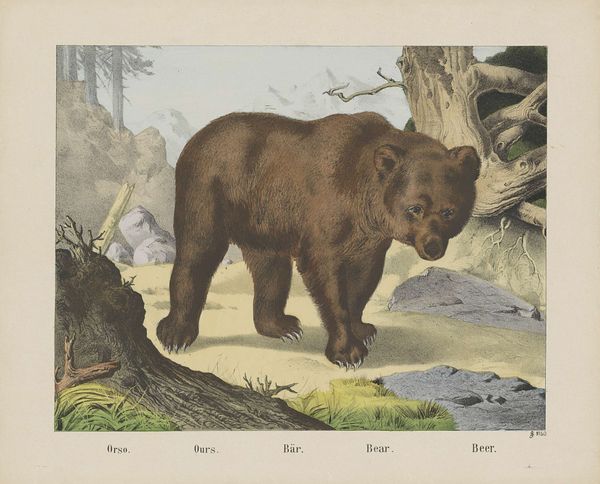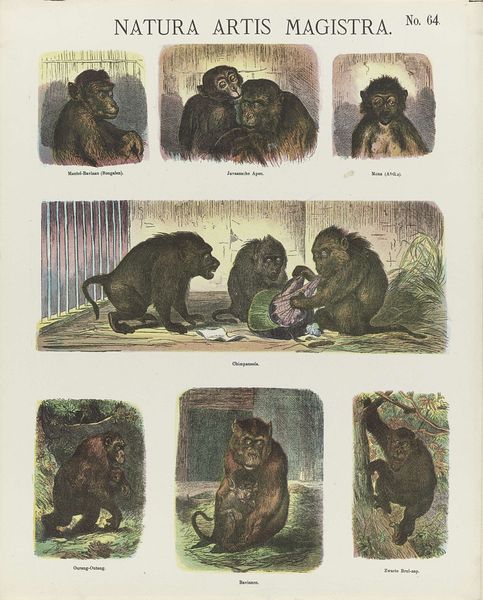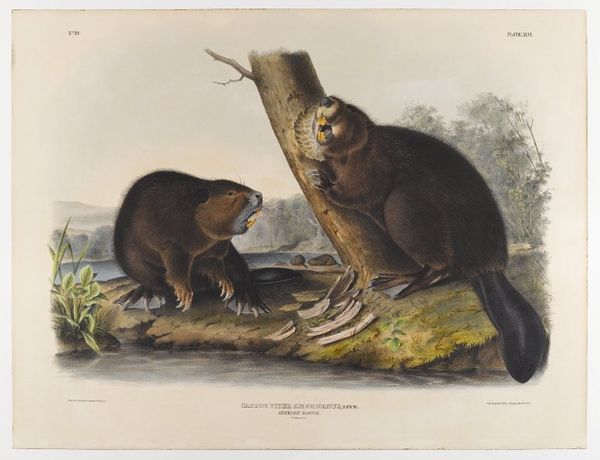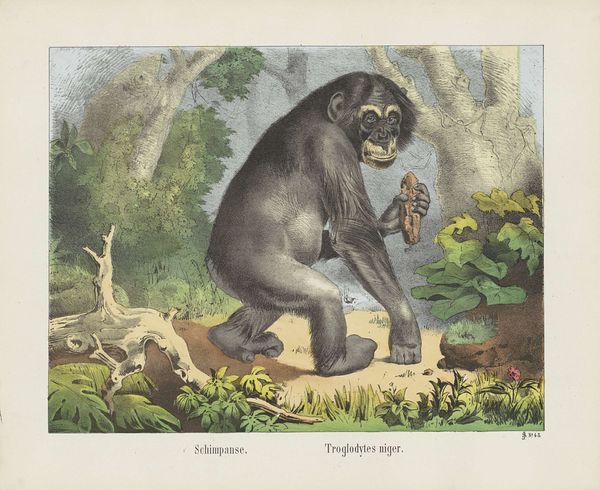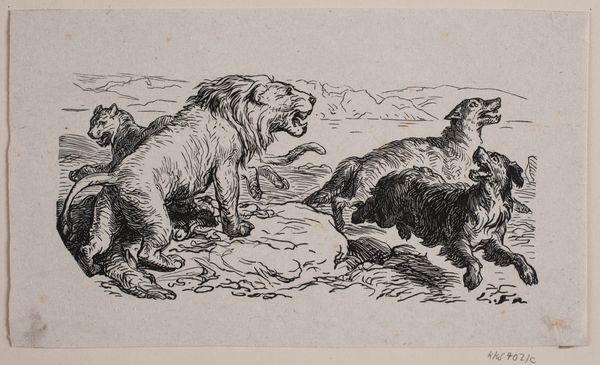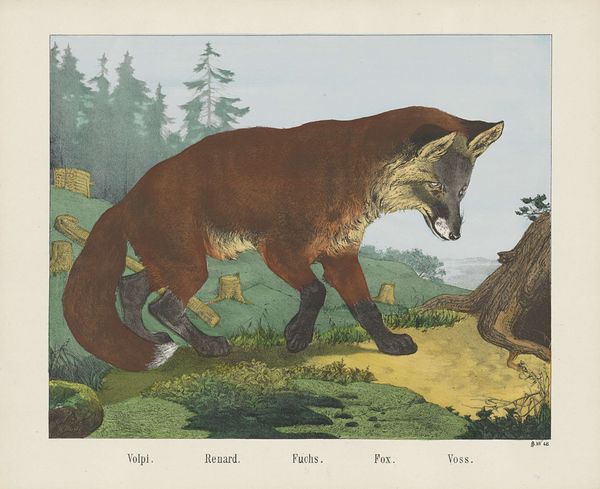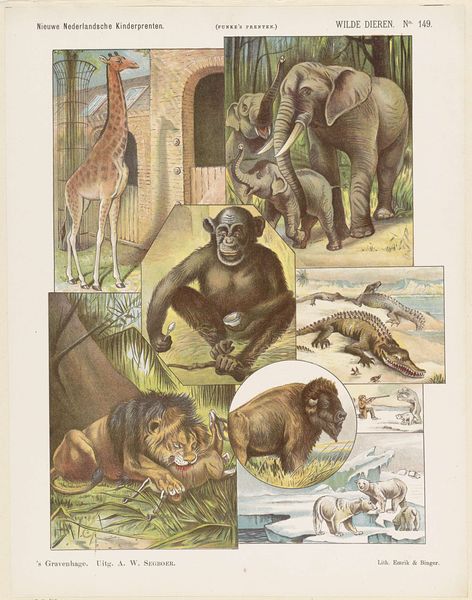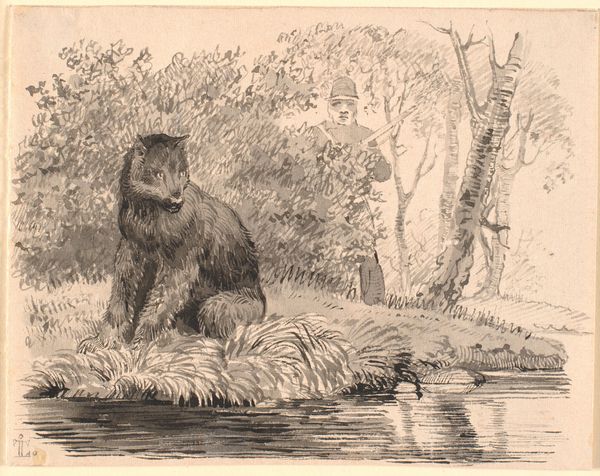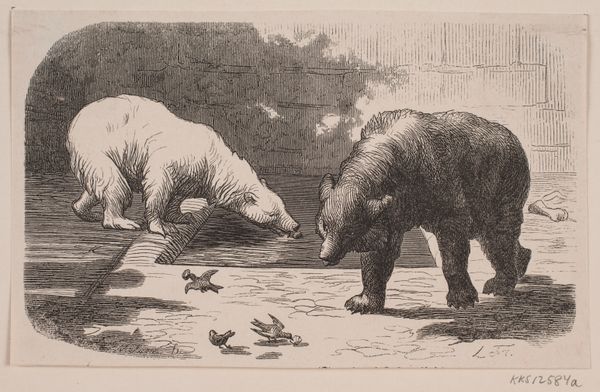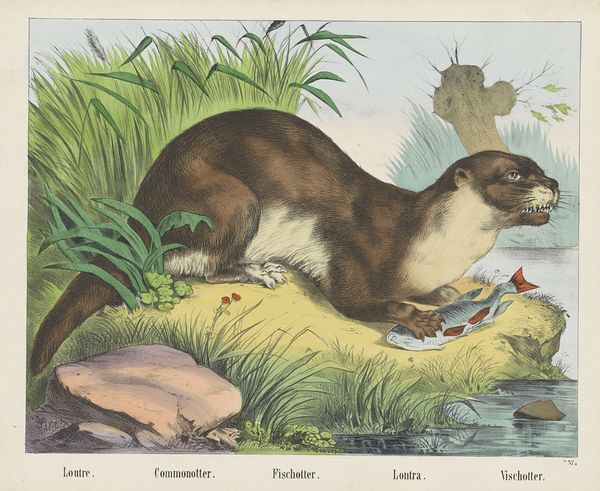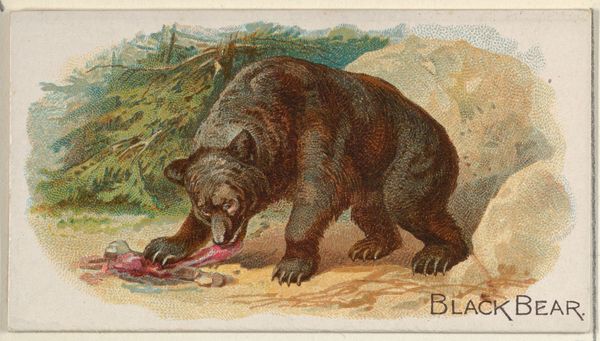
# print
#
landscape
#
genre-painting
#
watercolor
#
realism
Dimensions: height 350 mm, width 430 mm
Copyright: Rijks Museum: Open Domain
Editor: Here we have a print from between 1829 and 1880, titled "Bièvre," "Beaver," "Biber," "Castore," "Bever" by firma Joseph Scholz, and it's rendering of beavers in a realistic landscape feels quite meticulous. How would you interpret this work through the lens of its material creation? Curator: It's fascinating to consider this print through a materialist perspective. It isn’t just an image; it’s the product of very specific materials and labor practices. Think about the paper itself – its composition, where it came from, and the processes involved in its production. The ink, too. What kind of pigments were used, and where did those raw materials originate? Editor: That makes sense. And, presumably, decisions were made about the type of printing method and who was involved in producing the image? Curator: Exactly. The printing press, the skills of the printer – these all leave their mark on the final image. We need to examine the social and economic context that made this particular kind of print production possible. Who was the intended consumer? Was this meant for scientific study, artistic appreciation, or perhaps something else? Editor: It's interesting to consider how those choices reflect the social value placed on these depictions. I’d never considered how integral these processes and labor choices are to our reading of the artwork! Curator: By focusing on the material production, we can begin to deconstruct the seemingly neutral image and see it as a complex representation deeply embedded in a specific historical and social landscape. It invites us to question the very nature of how knowledge is produced and disseminated. Editor: So it challenges this division between 'high' art and something more functional? Curator: Precisely. What’s so fascinating is that seemingly ‘mundane’ craft like printmaking has been largely excluded, when in fact it tells us so much about social conditions, industrial capacity, and more. It's much more than *just* an image of beavers. Editor: Thank you, that truly changes my view! It sounds like every choice reveals the art's ties to labor, economics, and material value, not just aesthetics.
Comments
No comments
Be the first to comment and join the conversation on the ultimate creative platform.
